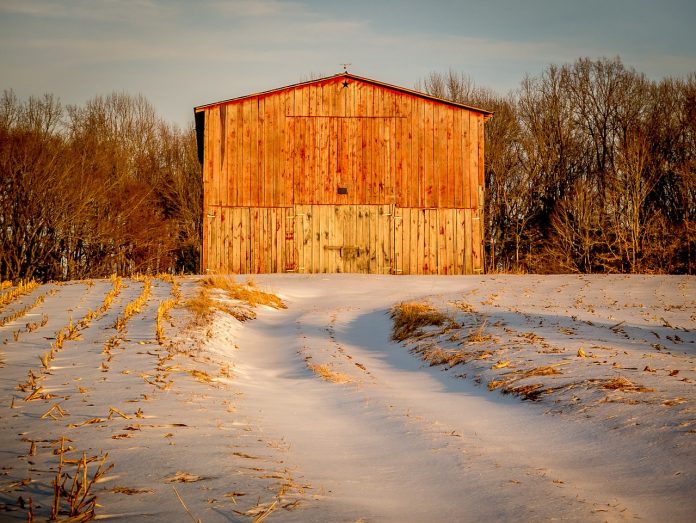“There is no more satisfying structure in the whole world than a well-built old American barn, just as she stands.”
— E.B. White
The sun is shining brightly on the happy, white-haired man, squinting in its brightness. His loyal sidekick, a dog he named Herbie Hoover, attempts to step away; a blur of the best dog of a lifetime is all that is captured in black and white. It is the landmark in the background that placed just where this special visitor and his dog happened to be.
Dad grinned and said, “That’s at the home place, and it looks like Grandpa Charlie Myers had stopped by with his old mutt Herbie Hoover to show my folks what a good dog could do on their farm.”
He chuckled, contemplating how it surely went with his mother’s fun-hearted dad, all ribbing done in good fun. I remember asking how in the world Dad knew where that picture had been taken, as I saw so little in the way of reference points.
“The big barn in the far background. Not another one like it.”
Memories
I have few memories inside the enormous barn my father’s ancestor built, but nearly every childhood memory of spending time at my grandfather’s or traveling the quiet country road throughout my life holds that barn in the landscape of it all.
I threw feed to chickens from the apron my Aunt Marilyn let me wear, tied around twice, holding it “just so” to cup the tiny amount of feed just like she always did, walking with great concentration toward the barn where the chickens roosted. I cut myself badly enough to require the only stitches of my childhood in the shadow of that grand barn.
I was a young sprout trying to keep up with big boy cousins at a large family Sunday gathering and got knocked down on to a glass dish. My forearm was gashed deeply. I remember sitting on the barn bank while adults determined if I needed a doctor, while I fretted that my prettiest yellow dress was surely ruined.
It was the barn built with native lumber back in the mid-1800s by our first ancestor to settle the farm where my father would much later be born and raised, the large Victorian house holding several generations. Dad was eventually to purchase the farm from his surviving brother and sister after his father’s death.
Respect
He would go on to spend a great sum of money repairing the foundation and replacing the heavy slate roof with materials he specifically chose with his heart set on the investment standing the test of time. I visited with my young children nearly every single day as that barn restoration work was being done. My Dad’s enthusiastic pride in the project was mightily contagious.
He had taught us to respect the barns on each of our farms, not only because it was ours to care for, but to carry gratitude toward the people who had worked those farms before us, building what we were fortunate enough to have stepped in to, caretakers one and all.
As we watched the early progress of the regeneration of the barn, great slate pieces raining down, Dad passed down homestead stories he had learned as a youngster to my own son and daughter. He told of the one-armed carpenter hired to build it, a slight man who, it was said, could scale that enormous barn like it was a tree for climbing.
A picture I hold dear shows Dad in his Allis-Chalmers farm cap, bent down on one knee to hold my son near, pointing out a detail on the barn, a story surely being handed down for safe keeping.
Next week: Part Two, a changing American landscape.













